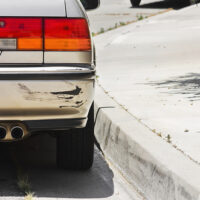Defendant Liable for Rear-End Collision Injuries in Newburgh Car Crash

In the case of Gumbs v. Charres, we represented the plaintiff who was rear-ended while stopped at the light in a Newburgh intersection. In the course of the litigation in the New York Supreme Court, Orange County, we were successful in pursuing the plaintiff’s motion for summary judgment on the issue of liability, and we were also successful in opposing the defendant’s motion for summary judgment on the issue of serious injury.
Plaintiff’s Motion Granted
Prior to trial, we moved the court for summary judgment on the issue of liability, asking the judge to rule as a matter of law that the defendant was liable for causing the accident. By showing that the plaintiff was rear-ended while stopped, we established an initial, or prima facie, case of negligence. According to our client, the defendant was on the phone at the time of the accident. The defendant had a different story and argued instead that the plaintiff was in the process of making a right turn but “stopped short,” causing the defendant to hit her.
The court did not buy this argument. Even if the defendant’s story were true, a person turning right at an intersection may have good reason to stop mid-turn, such as to yield to pedestrians in the crosswalk. The driver of a trailing car should be aware of this fact and be prepared to stop.
The defendant in this case could not establish that she was paying attention to the crosswalk or offer any non-negligent reason for why she could not stop in time to avoid a collision. The judge granted our motion holding the defendant liable, limiting the trial to the issue of whether the plaintiff suffered a serious injury and if so, what were the nature and extent of her damages.
Defendant’s Motion Denied
The next hearing came four months later on the defendant’s motion for summary judgment. The defendant wanted the judge to dismiss the case because the plaintiff did not sustain a “serious injury” required for a lawsuit under New York Insurance Law section 5102(d). Our client had in fact alleged several different categories of serious injury under the law, including:
- Permanent loss of use of a body organ, member, function or system
- Permanent consequential limitation of use of a body organ or member
- Significant limitation of use of a body function or system
- Medically determined injury or impairment which prevents the injured person from performing substantially all of her usual and customary daily activities for not less than 90 of the 180 days immediately following the occurrence of the injury
The defendant’s job in a summary judgment motion of this type is to submit testimony of medical experts who examined the plaintiff and concluded that no objective medical findings support the plaintiff’s claim. The defendant here relied on reports submitted by two experts: one report did not include any objective medical testing, and the other report contained testing which contradicted the doctor’s own conclusions regarding serious injury! Finally, neither report addressed at all the 90/180 claim for serious injury. Clearly, the defendant failed in her quest to show the plaintiff did not suffer a serious injury as a matter of law, and her motion was denied.
